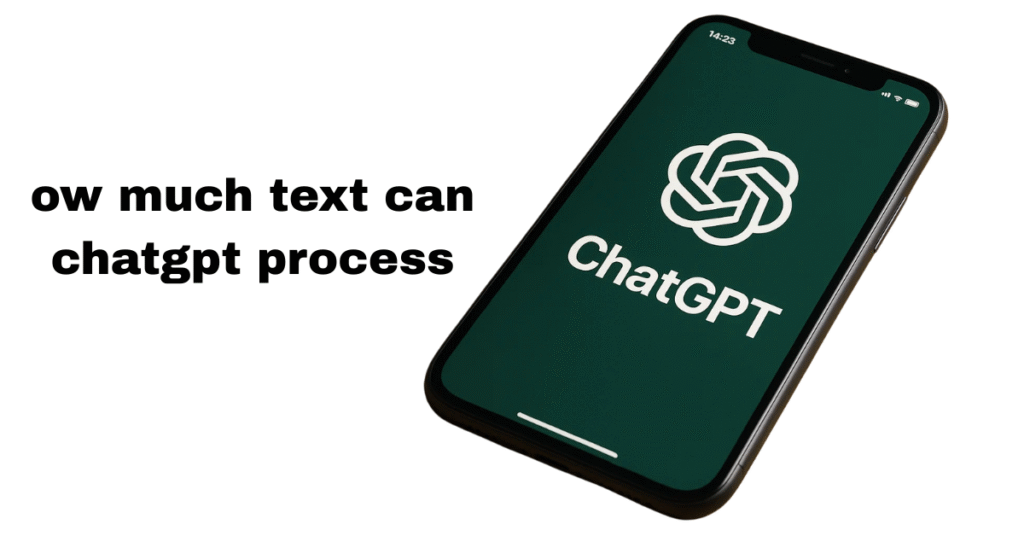Ever wondered how to input long text into ChatGPT without losing meaning or flow? You’re not alone. Many users struggle with adding essays, detailed reports, or complex data because they don’t know the right way to do it. Whether you’re a student, researcher, or content creator, handling long-form input in ChatGPT can feel confusing and limited. This article is your complete guide to solving that issue. We will explain how to input large text correctly, what to expect from ChatGPT in return, and how to get the most accurate, helpful responses. From parsing research papers to editing long documents or summarizing lengthy content, this guide covers it all. Discover smart tips, avoid common mistakes, and finally make ChatGPT work better for your long text needs. Let’s unlock the full potential of ChatGPT together.
How Much Text Can ChatGPT Handle? Limits Explained
When you are trying to input long text into ChatGPT, like essays, reports, or detailed notes, it’s essential to understand the concept of tokens. A token is a small piece of text, usually a word, part of a word, or even punctuation. On average, 1 token is about 4 characters or 0.75 words. That means 100 tokens equal around 75 words, and one full page (about 500 words) is usually between 650 to 700 tokens.
Token limits in different versions:
- ChatGPT-4.5 (Turbo): Up to 128,000 tokens (~300+ pages)
- ChatGPT-4 (Standard): 8,000 to 32,000 tokens
- ChatGPT-3.5: Around 4,000 tokens
Knowing these limits helps you avoid input errors and ensures that ChatGPT processes your full message without cutting anything off.
Maximum Text ChatGPT Can Process at Once
Many people struggle with how much text they can actually put into ChatGPT at one time. If your input is too long, ChatGPT might cut it off or not respond appropriately. This can be frustrating when you are working on essays, reports, or big projects.
On average, ChatGPT can handle several thousand words in one go. For example, the paid version (ChatGPT-4.5 Turbo) can process about 300 pages of text at once, which means you can input entire chapters or long reports without worry. The standard paid version can handle between 8,000 and 32,000 tokens (roughly 6,000 and 24,000 words), enough for multiple pages or a detailed essay. The free version usually supports around 4,000 tokens (about 3,000 words), which is suitable for shorter texts but may not be enough for very long documents.
Understanding these limits helps you plan your inputs better and avoid losing essential parts of your text. If you need to work with large files, using the paid version can save time and reduce hassle.
ChatGPT Token Limit Breakdown
One familiar problem users face is not knowing how much text they can input without affecting ChatGPT’s answers. ChatGPT has a total token limit, which includes both the text you enter (input) and the text it generates (output). This means the longer your input, the less space there is for a detailed reply.
For example, if you send a very long prompt, ChatGPT has fewer tokens left to create a complete, helpful response. This can make answers shorter or less complete, which is frustrating when you want detailed explanations or summaries.
Knowing this helps you balance your input length so you get the best answers. If you want longer replies, try keeping your input clear and concise, or split significant texts into smaller parts. This way, you avoid cutting off important info and get the most from ChatGPT.
How to Optimize Long Texts for ChatGPT
Many users get stuck when trying to input long texts because ChatGPT has limits on how much it can process at once. Smart strategies are needed to get the best results.
One effective method is chunking, which breaks your content into smaller, meaningful parts. Instead of pasting a huge text all at once, split it into sections or paragraphs. This helps ChatGPT understand and respond better.
Another tip is to start with a summary or brief context before diving into details. Giving ChatGPT a quick overview sets the stage, so it knows what to focus on and can provide more precise answers.
Finally, use focused prompts. Ask specific questions or give clear instructions related to each chunk. This guides ChatGPT in providing precise, functional responses instead of vague or off-topic replies.
Using these techniques will save you time and frustration while improving the quality of ChatGPT’s answers.
ChatGPT vs Other AI Tools: Text Processing Comparison
Here’s a simple comparison table for ChatGPT and other AI tools focusing on text processing limits and use cases:
| AI Tool | Max Text Input (Tokens) | Best For | When to Choose |
| ChatGPT-4.5 Turbo | Up to 128,000 tokens | Long documents, detailed analysis | Large essays, reports, and deep text processing |
| ChatGPT-4 (Standard) | 8,000 – 32,000 tokens | Medium-length texts, balanced tasks | Essays, summaries, creative writing |
| Claude | Around 100,000 tokens | Complex reasoning, long inputs | When you need a deep understanding of big text |
| Gemini | Varies, up to ~100,000 tokens | Research, multi-step tasks | Handling research papers and extended queries |
| Perplexity | Smaller limits (~4,000 tokens) | Quick answers, short summaries | Fast fact-finding and brief responses |
This table helps you see which AI tool suits your text size and task, so you avoid input limits and get the best results.
Conclusion
In summary, understanding how ChatGPT handles long texts is key to getting the best results. Knowing about tokens and input limits helps you avoid frustrating cut-offs or incomplete answers. Remember, the total token limit includes both your input and ChatGPT’s response, so balancing the two is important. To work smoothly with large amounts of content, use techniques like chunking, providing summaries, and asking focused questions. This not only improves ChatGPT’s replies but also saves your time and effort. If you often deal with long documents, consider using paid versions that support larger inputs. Start by testing with smaller parts of your content, then scale up as you learn. By following these simple steps, you can unlock ChatGPT’s full potential for long-form text and make your work easier and more effective.


